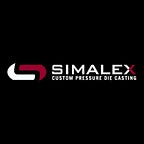Exploring the Different Types of Die-Casting Machines
Introduction
Die casting is a widely used manufacturing process that allows to produce intricate and precise metal parts with excellent dimensional accuracy. To achieve the best results, it is essential to choose the right die-casting machine for the specific application. In this blog, we will delve into the world's types of die-casting machines, exploring the different types available and their unique characteristics.
Hot Chamber Die Casting Machines
Hot chambers die casting machines, also known as gooseneck machines, are primarily used for casting alloys with low melting points, such as zinc, magnesium, and lead-based alloys. These machines have a furnace integrated into the casting system, which holds the molten metal. The furnace is connected to the die cavity by a gooseneck, which helps in injecting the molten metal into the die with ease.
The advantage of hot chamber machines lies in their efficiency and speed, making them ideal for high-volume production. However, their limitation is that they cannot be used for alloys with higher melting points as the furnace and gooseneck may not withstand the intense heat.
Cold Chamber Die Casting Machines
Cold chambers die casting machines are suitable for casting metals with higher melting points, such as aluminum, copper, and their alloys. Unlike hot chamber machines, these machines have a separate melting furnace that holds the molten metal. The molten metal is then ladled into the cold chamber, where a hydraulically operated piston injects the metal into the die.
One significant advantage of cold chamber machines is their ability to handle a broader range of alloys, making them more versatile for various industrial applications. However, they are relatively slower compared to hot chamber machines, which makes them more suitable for lower to medium production volumes.
High-Pressure Die Casting Machines
High-pressure die-casting machines are designed to exert exceptionally high pressure on the molten metal during the injection process. This pressure ensures that the metal fills all the intricate details of the die cavity accurately. These machines can operate with both hot and cold chamber configurations.
The key benefits of high-pressure die-casting machines include improved surface finish, enhanced mechanical properties, and reduced porosity in the final castings. This makes them an excellent choice for critical applications where precision and strength are crucial.
Low-Pressure Die Casting Machines
Low-pressure die-casting machines utilize a different approach by applying low pressure to the molten metal to fill the die cavity. The furnace, containing the molten metal, is placed below the die, and the metal is drawn into the die by a vacuum or low-pressure air.
Low-pressure die casting is ideal for producing large, complex, and thin-walled castings, often used in the automotive and aerospace industries. This process ensures a smoother flow of metal and reduces the likelihood of porosity, resulting in high-quality castings.
Conclusion
Choosing the right die-casting machine is paramount to achieving high-quality castings and optimizing production efficiency. The type of machine selected depends on the specific requirements of the project, including the type of metal, complexity of the part, and production volume.
Hot chambers die casting machines are ideal for low melting point alloys and high-volume production. Cold chamber machines cater to higher melting point alloys and offer more versatility. High-pressure die-casting machines excel in precision and mechanical properties, while low-pressure machines are well-suited for large, thin-walled castings.
Understanding the different types of die casting machines empowers manufacturers to make informed decisions, ensuring successful outcomes for their die-casting projects. As technology continues to advance, die-casting machines will undoubtedly evolve, offering even more sophisticated capabilities and improved efficiency in the future.
